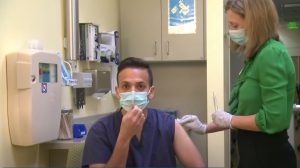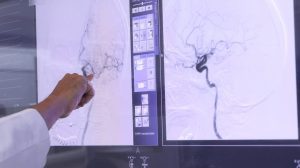NEW YORK (Reuters Health) – Even patients with severe migraine and tension-type headache may find relief with an over-the-counter analgesic that combines aspirin, acetaminophen and caffeine, according to results of a post-hoc subgroup analysis of a large study conducted in Germany.
The study tested two tablets of the fixed combination of acetylsalicylic acid (ASA; 250 mg), paracetamol (200 mg), and caffeine (50 mg) — a product marketed in Germany as Thomapyrin. A similar product in the United States is Excedrin Migraine.
Headache patients who “do not respond to simple analgesics such as aspirin, acetaminophen or ibuprofen” are ideal candidates for these combination medications, neurologist and headache specialist Dr. Hans-Christoph Diener from University Hospital Essen, who was involved in the study, told Reuters Health.
What’s perhaps most noteworthy about the subgroup analysis, he said, is that “even patients with severe headache responded to this therapy better than with simple analgesics or the combination of 2 analgesics without caffeine.”
Dr. Richard B. Lipton, of Albert Einstein College of Medicine and director of the Montefiore Headache Unit, who was not involved in the study, noted that “there are similar reports that Excedrin migraine, which is a similar combination, works in the most severe subgroups.”
The study was published online September 9 in Cephalalgia.
Most patients with severe headache use over-the-counter drugs without consulting a physician, Dr. Diener and colleagues note in their report, and the fixed-dose combination of ASA, paracetamol/acetaminophen and caffeine is one of the “most frequently used OTC analgesics.”
Results of the post-hoc subgroup analysis are based on 137 patients treated with Thomapyrin and 42 treated with placebo. Three independent headache episodes were treated by every patient.
Inclusion criteria were “restrictive,” the researchers say. They included only patients who were accustom to treating their episodic tension-type headache or migraine attacks with non-prescription analgesics and reported a history of headache attacks characterized by at least severe pain on a 5-point verbal rating scale (score 3 or higher) and greatly impaired usual daily activities.
Treated headache episodes had to have a pain intensity of at least 48 millimeters assessed on a 100-millimeter visual analogue scale and be associated with greatly impaired usual daily activities.
For the primary endpoint of time to 50% pain relief, the combination medication was statistically significantly superior to placebo (P=0.0008). The median time to 50% pain relief was 1 hour 24 minutes with the combination product compared with 2 hours 19 minutes with placebo.
The triple combination was also “superior” to placebo for all secondary endpoints, including time until reduction of pain intensity reached 10 mm, weighted sum of pain intensity difference, extent of impairment of daily activities, and global assessment of efficacy.
Both treatments were well tolerated and the incidence of adverse events observed was low.
The researchers note that the results for this subgroup analysis are consistent with the overall study population including non-severe headache patients. “As with all post-hoc subgroup analyses, the findings are hypothesis generating only and must be interpreted with caution,” they add.
This study, Dr. Lipton said, confirms previous studies that found adding caffeine to aspirin and acetaminophen “increased the efficacy of pain relief.”
The authors state that this research received no specific grant from any funding agency in the public, commercial or not-for-profit sectors. Dr. Diener has disclosed financial relationships with several pharmaceutical companies, all listed with the original article.
Reference:
Cephalalgia 2011.




